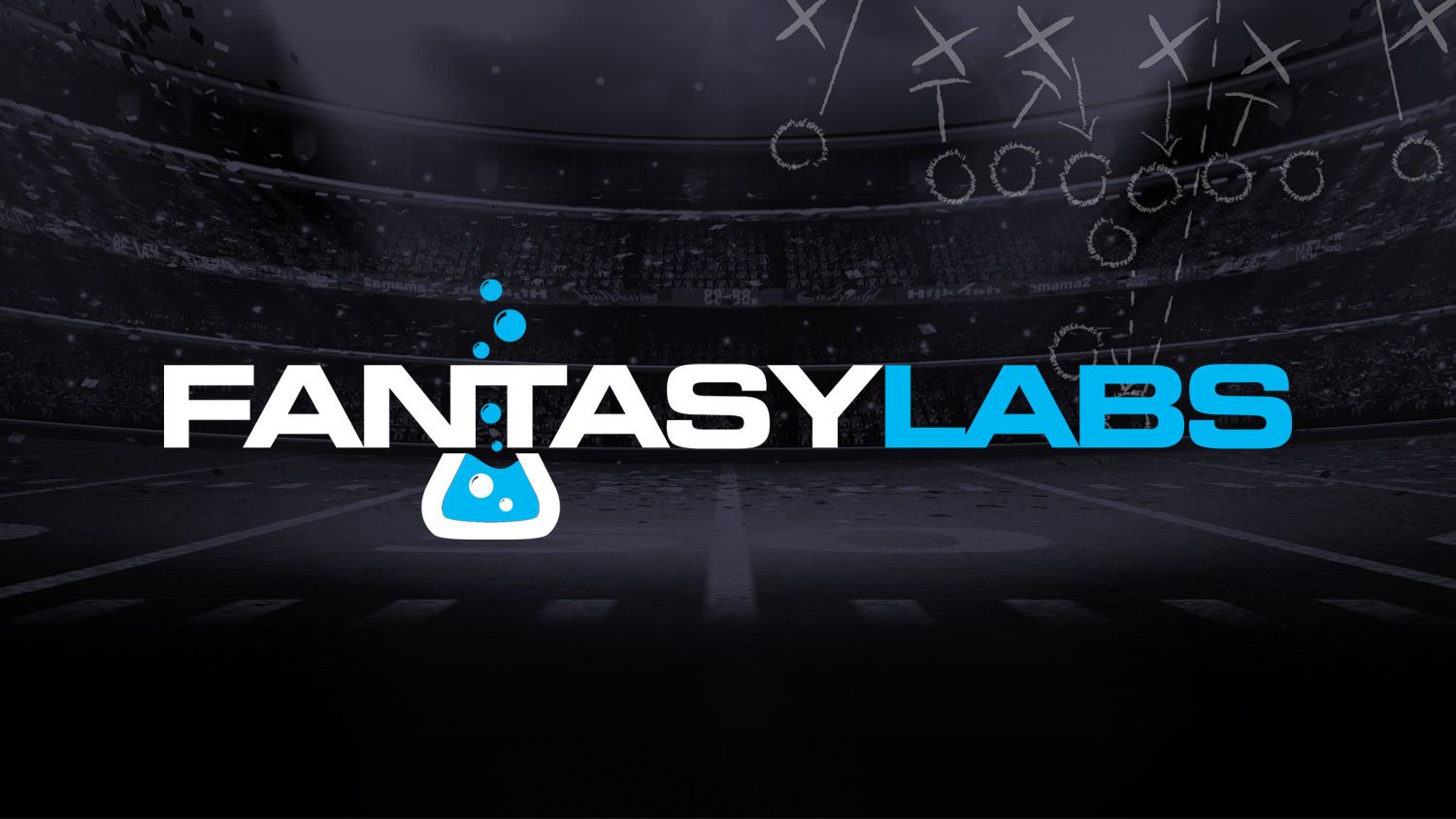As DFS players, we spend most of our time looking forward to the next slate, the next season, etc. Equally important, though, is looking back. Figuring out the thought process that leads to winning lineups is crucial. That’s what makes us better players long term.
Each week in 2022, I’ll look at the winning lineup in DraftKings Millionaire Maker Contest with an eye for how the lucky winner arrived at the lineup that took it down. Rather than going through every position, we’ll focus on key lessons that can be learned — and maybe even some mistakes worth avoiding.
While a high degree of positive variance is necessary to win a contest of this size (Week 2’s $20 contest had over 236,000 entrants), there’s still a large amount of skill involved to get to a position to benefit from that variance.
Here’s Week 2’s winner, using the FantasyLabs Contest Dashboard Tool to provide more data about that user’s play.
The Lineup

“Madcow65” is the winner this time, with a nearly 15-point lead over second place. They entered just two lineups into this contest, with the other one finishing in 635th place — still extremely strong given the field size. In fact, five of their nine players were repeated in both lineups, meaning madcow had a strong take on them, which proved to be correct.
The Stack
Last week, we talked about the Millionaire Maker’s winning lineup featuring only a single stack and the benefits of playing that way. This week, that wasn’t the case — though it helps that last week’s $5 millionaire featured an even larger field size.
Madcow65 went with the Miami double-stack, rostering Tua Tagovailoa, Jalen Waddle, and Tyreek Hill, which they brought back with Mark Andrews of the Ravens. Tagovailoa threw for six passing touchdowns, with four of those going to Waddle and Hill. All three players also hit their yardage bonuses.
This isn’t enough to convince me that the double-stack is the way to go in super large field tournaments though. It’s rare to see two pass-catchers on the same team put up massive scores like this. The Ravens were the second-highest scoring team on the slate, and each of Lamar Jackson’s three passing touchdowns went to different targets. Mobile quarterbacks like Jackson certainly shouldn’t be double-stacked,
As a further example, the highest-scoring team outside of this game was Detroit. Jared Goff threw four passing touchdowns — and only Amon-Ra St. Brown topped 13 receiving points. A Goff-St. Brown stack was awesome this week, including an extra Lion would’ve tanked it.
One-Off Plays
This lineup eschewed any other correlations outside of the Miami-Baltimore game stack. We’ve already mentioned St. Brown, who was a great choice. The Lions receiver has an insane 34% target share through two games. With Lions-Commanders featuring a solid 48-point total heading into this one, getting more than a third of the favored team’s passing production from one player is obviously a strong choice.
He also included Jeff Wilson Jr. and Nick Chubb. at the running back spot. Both are “yardage and touchdown” type backs who contribute mostly on the ground. Despite the final score, Cleveland controlled most of their game, largely thanks to three Chubb touchdowns.
Wilson was the closest thing to a “dud” on this lineup but still posted a reasonable score. San Francisco gave him 18 carries in a game they largely controlled (despite losing Trey Lance early). Madcow65 would’ve won the million even with a 0 from Wilson though.
The Chalk
Madcow rostered only one player owned at over 20% — value wide receiver Greg Dortch. Dortch was in line for a major role with both Andy Isabella and Rondale Moore out for the Cardinals, and he delivered despite drawing only four targets.
There were a couple of options in Dortch’s price range this week. Ashton Dulin of the Colts scored 13.2 points at $300 cheaper, and Richie James of the Giants scored 10.1 at the same price as Dulin. Both were somewhat less owned as well.
Far be it from me to criticize a brand new millionaire, but given the ownership of all of the punt options, Dulin and James were probably better plays in the long run. Of course, given Madcow’s margin of victory, they would’ve taken this one down regardless of which of the three were in the lineup.
The Sleepers
Yet again, the most unique member of the winning lineup was the defense. This is something I made a point of last week, and it’s even more relevant in Week 2. In fact, Jacksonville fit the same important trend that Pittsburgh did last week: playing against a divisional opponent.
Defenses facing an in-division team have slightly lower ownership but a 3% higher chance at an upside score according to our trends database.
The important takeaway isn’t that trend though. It’s to avoid the chalky defense. The Bengals were the second-most popular player — regardless of position — in the contest. They scored just four points. The variance on defenses is simply too high to “eat the chalk” regardless of how strong a choice they appear to be.
To further drive this point home, the second-place finisher — “acarpen2” would’ve won the contest with the Jags’ defense. Any guess who they played instead? That’s right, the Bengals. (Full disclosure, the extra $100 for Jacksonville was out of reach of the second-place lineup, but the point still stands.)
There are a ton of ways to express this point, but here’s one more. Four defenses scored double-digit DraftKings points in Week 2.
None of them were owned at more than 3.26%. Of the four units with at least 5.0% ownership, none scored more than four points.







